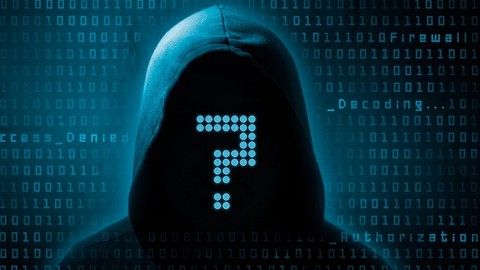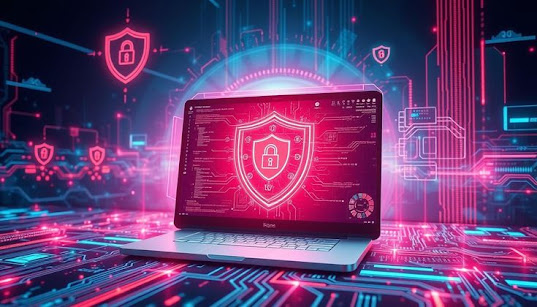The Rise of AI-Powered Phishing: How Deepfakes and Language Models Fool Victims
The Rise of AI-Powered Phishing: How Deepfakes and Language Models Fool Victims
Phishing has always been one of the most persistent and damaging forms of cyberattacks. From deceptive emails pretending to be a bank to fake login pages designed to steal passwords, phishing schemes have evolved with each technological leap. But in 2025, phishing has entered a far more dangerous era—driven by artificial intelligence. Cybercriminals are now using AI-powered tools to create phishing content that is more persuasive, personalized, and nearly impossible to detect with the human eye or traditional security systems. The rise of deepfake technology and advanced language models has elevated phishing from a crude scam to a hyper-realistic manipulation tactic. It’s no longer about tricking the gullible; it’s about fooling even the vigilant.
The biggest transformation in phishing comes from AI-generated language models—tools like ChatGPT and its more advanced successors. These models can generate flawless text that mimics human writing. What used to be phishing emails filled with grammar mistakes and awkward phrasing are now professional, polite, and contextually accurate messages. A simple prompt like “Write a convincing email asking an employee to reset their password using the company’s IT tone” can generate content so realistic that even cybersecurity professionals might hesitate before identifying it as fake. Attackers use publicly available data, such as LinkedIn profiles or social media posts, to tailor messages that feel authentic and urgent.
Worse still, voice deepfakes and video impersonation are now part of the phishing toolkit. Using just a few seconds of audio from a social media video, attackers can clone a person’s voice with alarming accuracy. In 2025, this technology is being used in voice phishing (vishing) attacks to impersonate CEOs or high-ranking executives. Employees receive calls that sound like their boss, urgently asking them to wire money or approve transactions. In some cases, attackers combine deepfake voices with spoofed caller IDs to make the deception airtight. The emotional manipulation and perceived authority of the caller make it extremely hard to question the request.
Video deepfakes take the threat even further. Hackers can now generate realistic videos of company leaders making announcements, issuing requests, or confirming transactions. These videos may appear in internal chat systems, emails, or even video conferencing tools. Because they seem to show a real human face delivering a message in real time, they bypass the usual defenses we use to detect fraud. The emotional trust we place in faces and voices is being weaponized by generative AI to bypass our critical thinking.
One of the reasons AI-powered phishing is so effective in 2025 is the automation and scalability that AI enables. Attackers no longer need to manually write thousands of phishing emails or design fake websites. AI can generate, personalize, and distribute phishing campaigns at scale. With tools that scrape social media for information, analyze email patterns, and generate targeted messages, cybercriminals can launch spear-phishing attacks against hundreds or thousands of targets simultaneously. Each message feels unique and personally addressed, increasing the likelihood of a successful click.
Even traditional anti-phishing filters are struggling to keep up. Most email security systems rely on known patterns, suspicious links, or blacklisted IP addresses. But AI-generated phishing campaigns often use fresh infrastructure, unique text, and clean code, bypassing detection mechanisms. In many cases, even advanced AI-based email filters are being fooled by the sophistication of their adversaries—other AIs. This has led to an AI arms race where defenders and attackers are using machine learning against each other in real time.
The rise of “phishing-as-a-service” (PhaaS) has further accelerated the problem. In 2025, even attackers with limited technical knowledge can purchase ready-to-use AI tools for phishing. These platforms offer intuitive dashboards, access to language models, customization options, and even reporting features to monitor campaign success. Some marketplaces on the dark web now offer subscription services, complete with tech support, where criminals can launch convincing phishing attacks without writing a single line of code. This democratization of AI-driven cybercrime has lowered the barrier to entry, increasing the volume and frequency of attacks.
Financial institutions, government agencies, and healthcare providers are among the top targets, but no sector is immune. In 2025, educational institutions, non-profits, and even small businesses face AI-generated phishing attempts regularly. Attackers tailor their strategies based on the target’s industry, common communication styles, and operational workflows. For example, a phishing email sent to a university may impersonate an academic journal, while one sent to a hospital might mimic a lab result notification. This context-aware phishing is hard to spot because it aligns with expectations.
Moreover, AI is being used to enhance credential harvesting techniques. Attackers generate fake login portals or document access pages that are nearly indistinguishable from the real ones. AI analyzes the target organization’s branding, layout, fonts, and wording to produce fake pages that look identical. When users click a link and enter their credentials, those details are captured instantly. In some advanced attacks, the credentials are used in real time to log into the user’s account, bypassing multifactor authentication before the victim realizes they’ve been tricked.
To make matters worse, AI can simulate conversations over email or messaging apps. Attackers create fake personas that engage in dialogue with the victim, slowly building trust. These conversations can span days or weeks, making them feel legitimate. For example, a fake vendor representative might message an accounts payable employee, initiate a quote process, send documents, and finally request payment. At every step, AI ensures the grammar, tone, and terminology match the real vendor. By the time the scam is complete, the victim has no reason to suspect fraud.
So how do organizations defend themselves in the face of this rising threat? The first step is acknowledging that traditional phishing defenses are no longer enough. Basic spam filters, user training videos, and blacklists can’t keep up with adaptive AI-powered attacks. Cybersecurity strategies in 2025 must evolve to include real-time behavioral analysis, AI-driven detection systems, and human-AI collaboration for alert verification. Advanced threat detection platforms now use behavioral biometrics, time-of-day patterns, and communication style analysis to spot anomalies even when messages appear clean.
Security awareness training must also evolve. In 2025, organizations are shifting from static training modules to dynamic phishing simulations that reflect the latest AI trends. Employees are exposed to real-looking voice messages, fake Zoom invites, and cloned video messages as part of their training. This exposure builds muscle memory and enhances their ability to question requests that feel slightly off—even if they appear convincing on the surface.
Another important defensive trend is the rise of identity verification layers. Organizations are implementing stricter controls for communication authenticity. For instance, executives may use digital signatures, biometric verification, or secure communication apps for sensitive instructions. Some companies now have strict “out-of-band” verification rules—meaning financial or data-related requests must be verified through a second channel, such as a phone call or a secure app. These policies add friction but are essential in a world where voices and faces can be faked.
Meanwhile, public awareness is playing a critical role. Governments, media, and cybersecurity experts are running public campaigns to inform people about AI-based scams. Recognizing deepfake technology, understanding language model manipulation, and questioning urgency-driven requests are becoming essential life skills. In fact, digital literacy in 2025 must include awareness of how AI can be used for deception—not just how to use AI for productivity.
On the technical side, developers are working to watermark or tag AI-generated content so it can be detected more easily. Some AI platforms now embed invisible identifiers in text, voice, or video that can be used to trace its origin. However, this technology is still in its early stages, and cybercriminals often strip or modify such markers. Still, it's a promising step toward building trust in digital communications again.
In response to the crisis, regulatory bodies are stepping in. Countries are proposing new laws that hold platforms and developers accountable for misuse of AI-generated content. Companies that build or distribute generative models may be required to implement misuse detection, logging, and user verification. Similarly, organizations that suffer breaches due to AI-generated phishing may face stricter penalties if they are found lacking in AI-specific security protocols.
In conclusion, phishing in 2025 is not the simple email scam of yesterday—it is a highly advanced, AI-driven attack method that leverages psychology, technology, and automation. The rise of deepfake videos, voice clones, and synthetic conversations has blurred the line between reality and manipulation. As a result, cybersecurity defense must now incorporate AI, education, policy, and culture to stay resilient. The fight against AI-powered phishing won’t be won by tools alone—it will require a collective awareness, smarter defenses, and a renewed commitment to digital trust.




Comments
Post a Comment